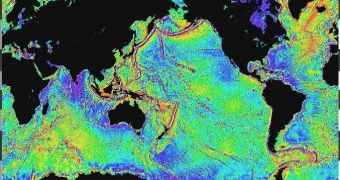The Monterey Bay Aquarium Research Institute (MBARI) in Moss Landing, California, has recently commissioned the construction of a new type of marine explorations robot. The instrument will be capable of acting like an underwater biological laboratory, essentially cutting out the “middleman” between sample sites and actual, ground-based labs. The machine, which will basically be shaped like a large can, will be able to identify DNA fragments on its own. This implies that scientists will no longer have to install specific experiments, and then return to the same location to retrieve the samples collected, for later analysis, Nature News reports.
The instrument will be capable of running genetic tests in-situ to determine the number and type of species that are present at a location of interest to researchers. The piece of equipment will be locked within a 1-meter-long canister, which means that it can be easily carried around, and deployed wherever it is needed. It will also be capable of discovering and analyzing proteins that are usually released by a wide variety of microorganisms under the water. “The instrument is, in essence, a microbiology laboratory in a can,” says bioengineer James Birch, who is a part of the team developing the “ecogenomic sensor” for the MBARI.
The automated lab cuts out the most expensive and time-consuming portion of all ocean-based studies, its developers say. Getting samples collected from the sea into a lab is the toughest. “They have to send somebody out on a ship or a pier, then schlep the water back,” Birch told scientists on February 23, at the 2010 Ocean Sciences Meeting of the American Geophysical Union (AGU). The gathering was held in Portland, Oregon. In the new approach, the expert said, fiber-optic cables connecting the mobile lab to the shore can relay results almost instantly. “Instead of going out and sampling once per week, which public health officials do now, this can give you results in an hour and a half,” he said.
He revealed that one immediate application for the instrument would be in algal bloom detection. These marine events can shut down beaches, crippling tourism-based shoreline economies, and causing millions of dollars in damages. Conversely, the instrument could be deployed in the deep sea, where bacterial communities are apparently a lot more dynamic than first thought. “There are lots of changes in the numbers and kinds of microbes, depending on weather and tides 1,000 meters above the instruments,” Birch concluded.

 14 DAY TRIAL //
14 DAY TRIAL //